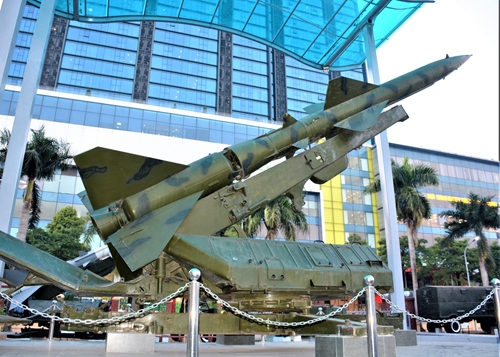December 22, 2022 | 21:23 (GMT+7)
December 22, 1972: U.S. air force increases air raids in vicinity of Hanoi
PANO - On December 20, 1971, the Air Defense - Air Force Service assessed that the U.S. Air Force could conduct air raids in Hai Phong and areas surrounding Hanoi capital. The General Staff of the Vietnam People's Army also announced that the enemy would use B-52 bombers to attack Hai Phong.
Immediately, the Air Defense - Air Force Service sent officers to popularize B-52 fighting methods to troops of Division 363.
    |
 |
|
SAM-2 launcher used to shoot down B52s in December 1972 showcased at the Air Defense - Air Force Museum |
In the afternoon of the same day, Prime Minister Pham Van Dong inquired after the Air Defense - Air Force Service and required its troops to raise high determination to defeat the U.S. imperialists’ strategic air raids and closely coordinate with diplomatic fronts to force the U.S. to sign the Paris Peace Accords.
Previously in the morning, Commander in Chief General Vo Nguyen Giap had a meeting with officers and soldiers from Battalion 77, Regiment 257, Division 361 on the 28th founding anniversary of the Vietnam People’s Army.
At the meeting, General Vo Nguyen Giap praised the air-defense missile force and forecast that in the coming days, the enemy would strengthen air attacks. He required troops to promptly learn from previous battles, continue to reinforce their fighting determination, reorganize troop formation, supplement ammunition and fuel, and adjust weapons and fighting methods.
In daytime, the U.S. tactical aircraft bombed Hanoi 56 times. At night, B-52s and other aircraft of different kinds attacked Hai Phong, Son Tay, and Bac Giang 24 times. Troops and people resolutely and courageously fought against the enemy. As a result, they shot down six U.S. aircraft, including three B-52s.
On the night and early morning of December 22 and 23, Hai Phong’s air defense troops braved difficulty and danger and shot down B-52s.
Translated by Quynh Oanh